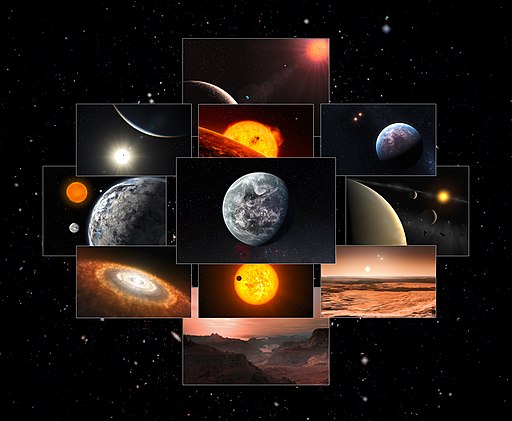A decade of discoveries from the High-Accuracy Radial Velocity Planet Searcher (HARPS). (WikiMedia Commons)
One thing that is clear in comparing the profile of the sciences with that of the humanities in the media is that in the case of science objects are the hook to catch public attention. In the 28,957 articles mentioning the “humanities” or “science(s)” we studied using a topic model, science topics (like #68 on astrophysics) show that science circulates in public discourse as a galaxy of catchy “objects”–especially big or strange ones like new planets, dwarf suns, black holes, spacecraft, or space telescopes. (Harder-to-grasp, unseeable, or more theoretical objects such as particles in particle physics generally sink out of view into the long tail of words in the topics in our model.)
Of course, any animated object (like animals in topic #101) is is just as catchy. The public loves science articles like this associated with topic #101: “Rats Surprise Scientists by not Living Up to Their Name” (“researchers at the University of Chicago sought to find out whether a rat would release a fellow rat from an unpleasantly restrictive cage if it could. The answer: Yes.”)
By contrast, the humanities seem to be object-poor in the media. Basically, much of the media views the humanities as having just a single kind of object: books! Books come in for a great deal of attention in public discourse related to the humanities. (See KFC-5-TBD] But what other objects can the humanities show off to focus public interest?
Audience for key finding: General, humanities scholars
Document corpus studied for key finding: 28,957 articles mentioning the “humanities” or “science(s)” in top U.S. newspapers, 2000-2018
Topic model of this corpus: US Humanities and Sciences or Sciences Documents from Top Newspapers, 2000-2018 (150 topics)
Sample topics in the model to look at: #68, #101,
Representative articles to look at: a, b.
Documentation for this key finding (WE1S report based on following project interpretation protocol for studying topic model)



